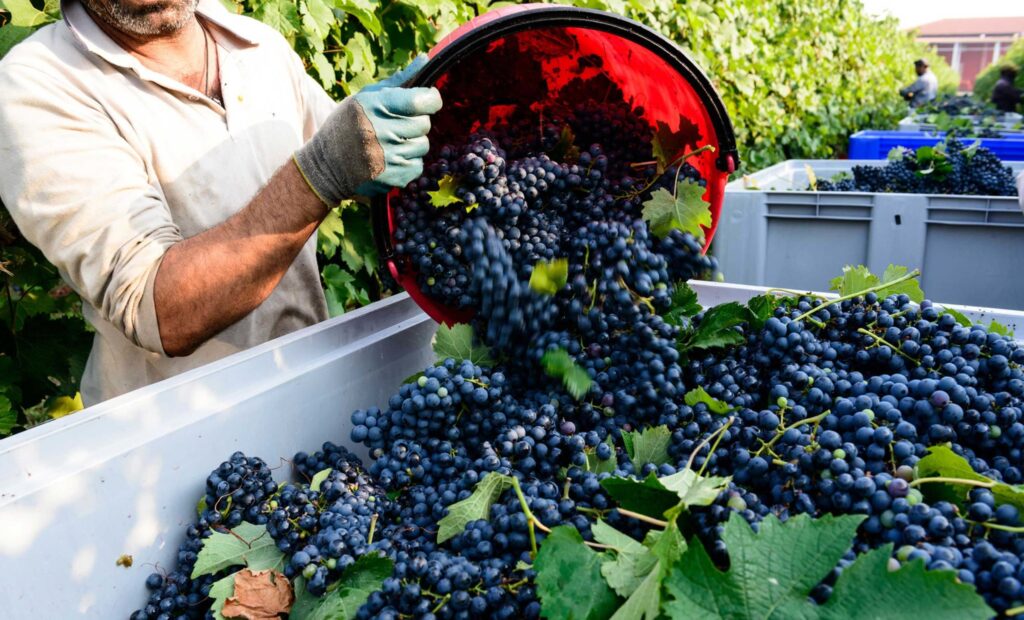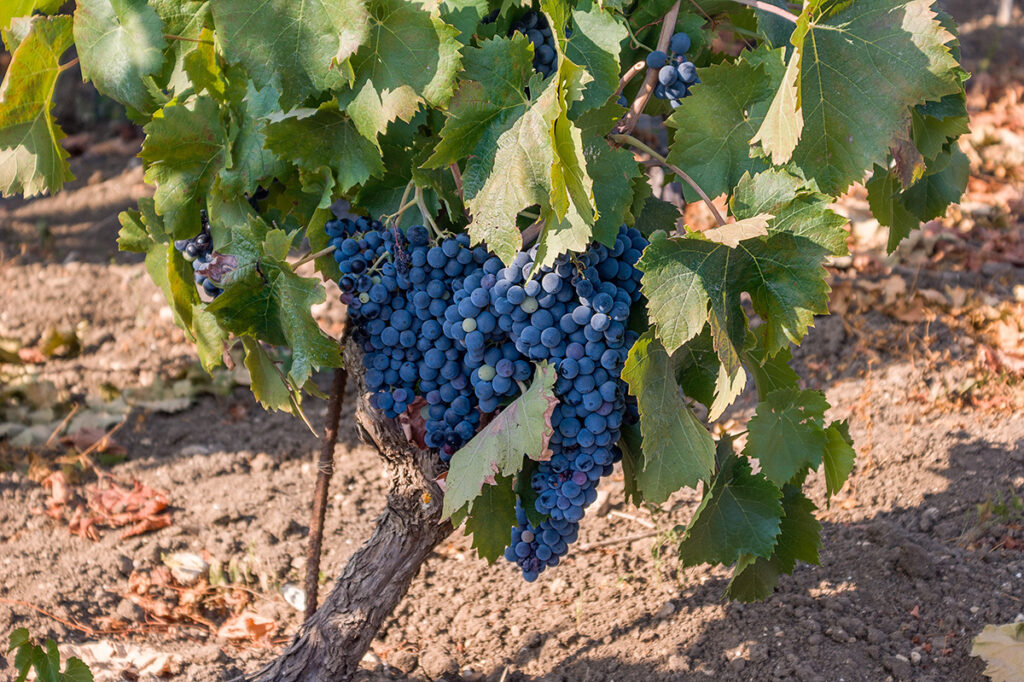Initially used as a blending wine, Nero d’Avola is today among the most appreciated throughout the world
There are Sicilian wines that have had a long and tortuous history before establishing themselves internationally as among the most important products of the region. Among these, there is one of the most important and famous native vines in Sicily: Nero d’Avola. Its name derives from its black berried grape and from the town of Avola, in the province of Syracuse, the place of origin of the vine together with other towns in the Syracuse area such as Noto and Pachino.
Its origin, in reality, is lost over time: the history of the vine could date back to the Phoenicians, according to some discoveries made on the slopes of Etna, but it is much more likely that the vine was introduced at the time of Greek colonization. In the Syracuse area, the vine would then have found the perfect habitat for its development: a dry and windy climate, which, however, is mitigated by the sea breeze while it is protected by the mountains on the north side. The type of sapling cultivation also derives from the Greeks, as per tradition. Today the vine is cultivated, not only in the province of Syracuse, but also in almost the entire region, in particular in the provinces of Agrigento and Caltanissetta.
The typical traits of the terroir where Nero d’Avola can be grown at the best of its characteristics are a dry climate with well-ventilated and exposed areas, with calcareous soils: being particularly sensitive to mold, in fact, dry and ventilated environments are able to prevent every problem. The vine has a medium-large bunch of black grapes, with a very dark blue, almost black berry. The peel is thin and pruinose. The resulting wine has an intense red color and a high alcohol content due to the grapes with a high concentration of sugars. The wines obtained in purity have a great aromatic richness, with fruity sensations of black cherries, blackberries and plums, and floral in the younger versions, while they are accompanied by spicy notes of vanilla and licorice with the aging in wood.
There are also differences in the origin of the wine. Those produced in the original area, the Syracuse area, have more elegant and refined notes, with hints of dried fruit. Those coming from the center of Sicily have an aftertaste of red fruit. Much stronger and more decisive on the palate are the wines from western Sicily which, as they age, develop aromas of cinnamon, cocoa, carob, leather and licorice. In general, the wines are, on the palate, deep and structured, warm and vigorous.

Precisely because of its high alcohol content, Nero d’Avola, although with a tradition dating back to antiquity, has been used for centuries as a blending wine, blended with other wines, in order to give them greater body and vigor. Benefiting from the characteristics of Nero d’Avola were, in particular, many red wines from Northern Italy and France.
Starting in the 1960s, Sicilian winemakers began producing pure wines with increasingly exceptional results. In recent decades, Nero d’Avola has been exported all over the world and is appreciated precisely for its strong and decisive character.
Nero d’Avola also continues to be used in blends with other light wines, such as Cabernet Sauvignon and Merlot. We also find it as an ingredient in some DOC and IGT wines, both as a protagonist and blending wine. Among these, to be remembered, the Eloro, the Marsala, the Cerasuolo di Vittoria and many others. Some producers are combining it with other international vines , obtaining surprisingly elegant results.
The taste and strong character of Nero d’Avola make it an ideal wine in combination with tasty foods. It is suitable to accompany first and second courses based on meat, with strong sauces based on game, or with hard cheeses. Its perfect pairing, however, is with some traditional Sicilian dishes: among the first courses, pasta ‘ncaciata (eggs, cheese, basil and pecorino) is excellent to be accompanied by more structured versions of wine; among the second courses, the tonno ammuttunato (cooked with garlic and caciocavallo) goes well with younger versions of the wine, as well as the traditional melenzane alla parmigiana (in Sicilian a Parmiciana i Mulinciani). Because it is right to combine the most important native Sicilian wine with the traditional flavors of the region, to create a perfect combination of flavors, smells and sensations as only Sicily can offer.





Comments are closed.